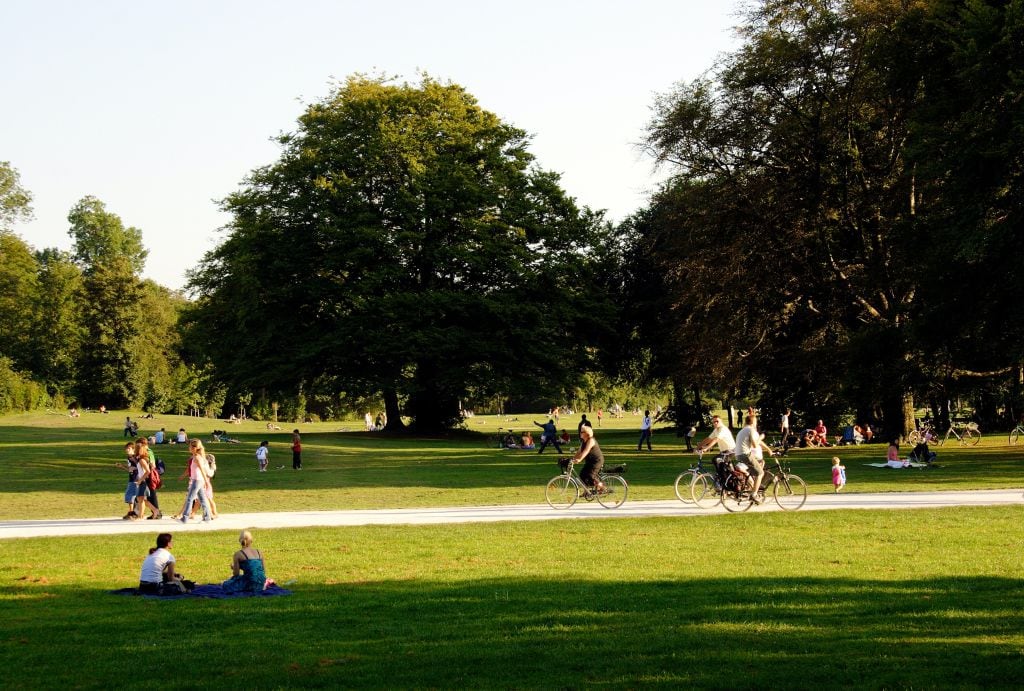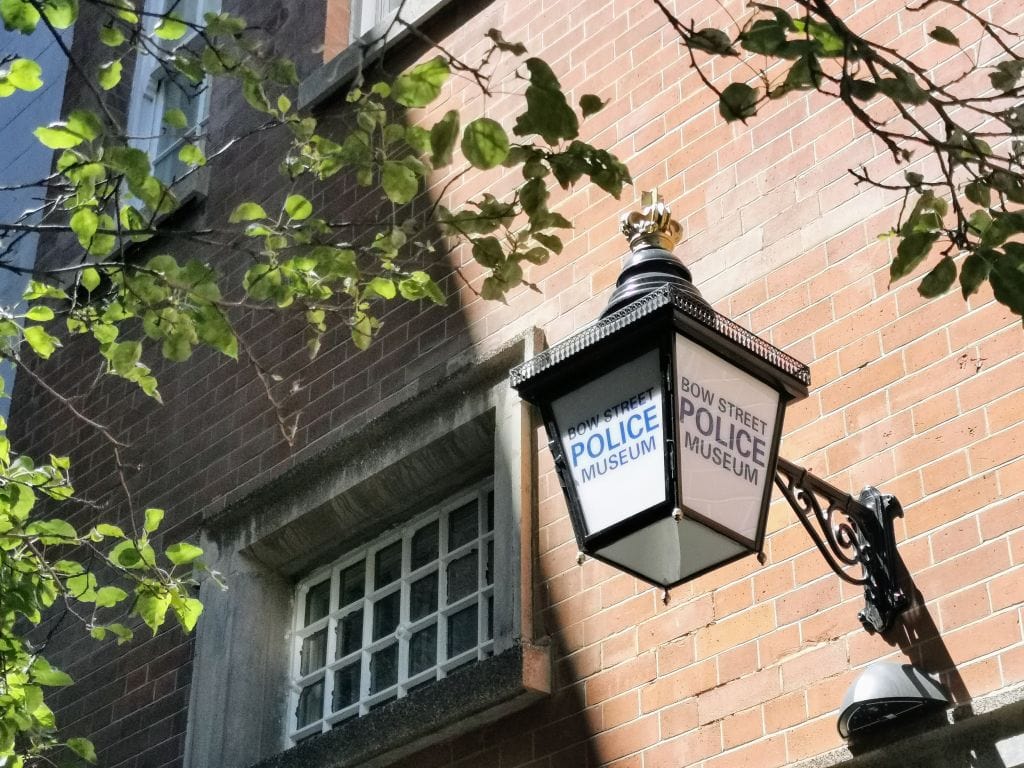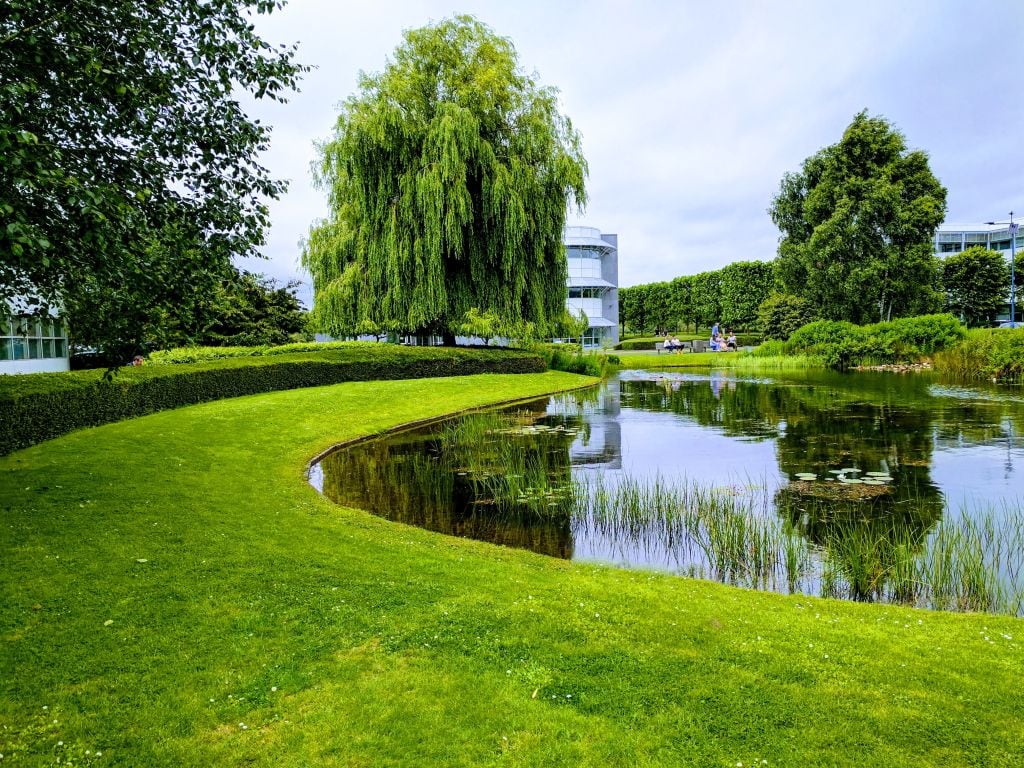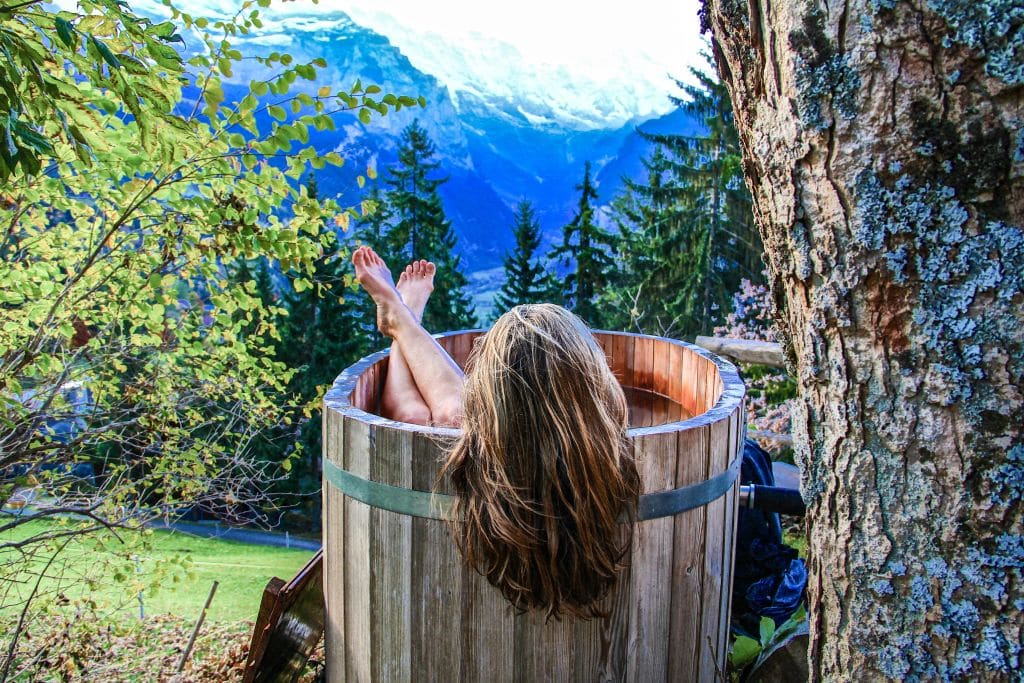After looking into many different options, these playgrounds and events emerged as the best for families in Melbourne and Geelong. We would appreciate it if you would take the time to read the aforementioned passages in order to gain a deeper understanding of the locations we have asked you to be mindful of. Every one of these places has something special to offer, and everyone should see it for themselves at least once.
McClelland Gallery & Sculpture Park
Set in 16 acres of landscaped gardens and natural bushland, the McClelland Gallery & Sculpture Park hosts a number of engaging and thought-provoking public programmes and exhibitions. In McClelland's outdoor sculpture collection, you can find works by more than seventy different Australian artists.
McClelland has three indoor exhibition spaces that feature rotating exhibitions and displays of works on paper, photographs, paintings, and sculptures from the collection. By hosting the McClelland Sculpture Survey and Award for Contemporary Outdoor Sculpture, the McClelland Gallery promotes the development of sculpture in Australia. These occurrences occur once every two years.
Wonderful for families of all ages. When you wander around and happen upon large-scale sculptures, what better way is there to appreciate the skill and imagination of an artist? Among the many interesting and thought-provoking sculptures dotted around the area is a sizable rock labyrinth.
At all times, you can see a select group of sculptures, but during the biennial Survey & Award, you can see many more. The sculpture trails meander through the woods, and at each branching off point, visitors can explore a new area rich with sculptures.
Phil Price's massive wind-activated kinetic sculpture, Tree of Life, is on display. Children are not allowed to climb on any of the sculptures, but they are free to explore the large group of white balls nearby.
Geelong, Bellarine and Surf Coast
An exquisitely designed playground with complete inclosure and a variety of separate play areas. Fencing is unnecessary because no one will want to leave this exciting and engaging play area. The pirate ship features a wave slide, a rope ladder on the side, a tyre steering wheel with music-making paddles, and a device that makes noise as you pass it.
A stand-on spinner, two springers, and a wide, sloping climbing wall can be found in this area.
Victoria Police Museum
The Victoria Police Museum in Melbourne's CBD showcases a darker side of the state's history, complete with tales of colourful criminals. Keep an eye out for the 19th century vampire-slaying kit; it was recovered in a Melbourne, Australia, drug raid in 2004.
The Victoria Police Museum houses a display on the darker side of Victorian history. The museum gives visitors a rare glimpse into the aftermath of Victorian-era crimes and disasters, complete with colourful criminals and the brave work of the police.
The museum's collection reflects the Victoria Police's involvement in nearly all of the city's major incidents. During the 1870s, Victoria, Australia, had a detective known as "Sherlock Holmes," John Christie. Learn about crime, justice, bravery, forensic techniques, and Victoria's police force's current efforts to make the city a safer place to live through more than 150 years of stories and exhibits.
To miss it would be a catastrophic error. In the World Trade Center, the museum is on the LC. The main entrance is on Siddeley Street, which is near the crossroads of Flinders and Spencer streets in Melbourne, Victoria.
The museum isn't huge, but it does have several exhibits detailing Victoria's police force's long and storied past. These displays are housed in about a dozen glass cases. It's only open during the week and has a nominal fee to get in (gold coin donation).
Inner North
Toddlers can enjoy their own dedicated boat-shaped play area complete with a ramp, block steps, coloured balls, and several informational boards. There is a basketball court, public restrooms, and a large shelter with grills and tables for cooking and eating.
Pure Peninsula Honey
Female bees are the ones who do the actual work. A single hive can house around 40,000 workers. They do the bulk of the work in the hive. They are in charge of gathering pollen or nectar, protecting the hive from intruder insects, cleaning the hive, constructing the comb, making honey, taking care of the queen, and feeding the drones and larvae.
When it gets really warm during the summer, they'll even fan the hive to keep it comfortable for the bees inside. Honey from the work of a single worker bee equals about a teaspoon's worth. They can expect to live for roughly six weeks.
The brood box is the lowest box in a beehive (or nursery). The queen bee will typically lay her eggs in the brood box, which is where she will also reside.
In most cases, beekeepers won't harvest honey from the brood box because it is used by the colony as part of its normal diet. A narrow horizontal slot cut into the bottom board of the box just below the lid serves as the hive's entrance. The bees use this entrance/exit to the hive. Hive temperature is maintained at about 34 degrees Celsius.
The honey supers are the tiers of boxes placed above the brood box. They're built with eight individual frames where the bees can construct honeycomb. Individual frames of honey comb can be removed when the comb is full. The honey produced by the bees is primarily stored in the supers. There may be more than one honey super stacked atop the hive if the bees are producing honey at an exceptionally high rate.
Number of supers needed is based on colony size and nectar harvest. Each of the supers has a cover that goes on top of it.
There is only ever one queen bee for every colony. The queen bee's primary function is to lay eggs, and she is the largest bee in the colony. Queen bees only have one chance at reproduction and will leave the hive during this brief time to mate with many drones. As soon as her eggs have been fertilised, she returns to the hive and begins laying new ones.
During this time, the worker bees take care of grooming and feeding her so that she can focus on laying eggs at a rate of a thousand per day or more. A typical reign for the queen lasts between two and four years.
Drones are sterile male bees. In time, they'll take on roles of leadership and paternity within the colony. The males outsize the females in terms of both eye size and antenna length. These aid them in their sole mission, which is to locate the queen while she is in flight and mate with her.
The swiftest drones will be able to mate with the queen, but they won't live very long before dying. They'll mate, drift back to Earth, and be dead before they touch down. Only a few hundred drones are allowed in a hive at any given time, and those drones may be expelled at the start of winter or during times of food scarcity.
Royal Jelly is an unusual substance that is used as larvae's primary food supply. Further, it is the driving force behind the transformation of some bee larvae into queens. It is a milky substance that results from the combination of pollen and honey that have been digested with a chemical secreted from a gland in the bee's head.
It is commonly used as a fertility aid and as a nutritional supplement due to its high vitamin B content. The high price of Royal Jelly is largely due to the fact that hives can only produce so much of the substance.
How a Princess Is Created As a rule, a colony will have a single queen. The colony would die without her because the workers would all die of old age before a new generation could be born.
When the current queen bee is about to leave the nest, the worker bees will know it (swarm). Multiple queen cells, much larger than regular worker bee cells, are built, and the established queen deposits eggs into them. As a result of being fed only Royal Jelly, the larva housed in these cells will mature into a queen rather than a worker. Despite extensive research, scientists have not yet been able to determine the specific nutrients found in royal jelly.
About four days after hatching, a queen larva will have grown to a size where it can take up most of its cell. Workers then close off the cell, and the larva spins a cocoon around itself, transforming into a pupa. Only 16 days after laying an egg, a new adult queen will emerge. The newly hatched queen immediately starts looking for more queen cells to join.
When she finds them, she gnaws a hole in the side of each one with her sharp teeth and then stings them to death. A queen bee will fight another queen bee to the death if two emerge from their cells at the same time.
Honey is a sweet substance produced by honeybees from nectar collected by the bees' workers. Water makes up the bulk of nectar, with only a small amount of complex sugars. Nectar is the transparent fluid that bees collect from the flower's terminal anthers. Honeybees get their sustenance from the nectar of various flowering plants, including clovers, dandelions, eucalyptus, and the blossoms of fruit trees.
Their long, tubelike tongues serve as straws to syphon nectar from flowers, and the nectar is stored in their "honey stomachs." A bee's honey-storing stomach acts like a backpack for carrying nectar, and the other stomach is used for digestion. After a bee has consumed all of the nectar it can hold, the honey stomach weighs nearly as much as the bee itself, reaching a maximum capacity of nearly 70 mg. Honeybees must visit between 100 and 1500 different kinds of flowers to satisfy their honey needs.
Honeybees will return with the nectar to the hive and share it with the other worker bees there. These honeybees get their nectar from their stomachs and ingest it through their mouths. These "house bees" "cheek" the nectar for roughly thirty minutes. This is the stage where the nectar's complex sugars are broken down into their simpler counterparts by enzymes. This makes the nectar safer for the bees to store within the hive, as it is more easily digestible and less likely to be contaminated by bacteria.
Once the nectar has been distributed throughout the honeycombs, the bees will stop working on it and the water will have evaporated, leaving behind a more concentrated syrup. The bees speed up the nectar's dehydration by flapping their wings. When the honey has thickened to the right consistency, the worker bees seal off the cell in the honeycomb with a wax plug. Bees keep producing honey, and then it gets stored until it's time to eat it. Every year, a single bee colony can go through 55 to 90 kilogrammes of honey.
Harmony Park, Gaffney Street, Coburg
Even though it's called "Harmony Park," the place is anything but tranquil once parents start shooing their children away. Children won't want to leave the spacious play area because it's so well-made and filled with fun things to do.
There is a steep rope ladder, a climbing wall, a massive wave slide, and a massive tunnel all located within the primary wooden structure. Here, you'll find a series of bridges, a section with car tyres that make noise when jumped on, a spacious hammock, and yet another section with a massive pyramid-shaped rope climbing frame, hanging discs, traverses, and swings without a safety chain.
A huge sandbox with a digger and a conveyor belt is hidden from the sun by shade sails. A car-shaped building complete with a tunnel, musical instruments, and steering wheels is also available. In addition to the swing set, the hillock features a slide, rocking speed boat, see-saw, see-saw with safety chains, and a huge plastic seat swing.
The playground features two covered areas with picnic tables and benches. In addition to the open-air furniture and tables, there is a sizable covered area with tables and barbeque grills. In addition to the usual amenities such as public restrooms and a water fountain, this expansive rocky landscape also features a sculpture with "tactile impressions," the latter of which was designed by students and artists from the surrounding community. There is a large grassy area, a skate park, and a basketball court nearby.
There is no restriction on the range of abilities that can use the facility. Wood chipping does not eliminate the need for walkways to the various pieces of machinery.
ANZ Banking Museum (Central Melbourne)
ANZ Banking Museum can be found in Melbourne's "Gothic Bank" on the building's basement level, 380 Collins Street.
Items such as banknotes and coins, moneyboxes, office machinery, firearms, gold-mining equipment, and uniforms are on display throughout the museum to shed light on Australia's financial past. The ANZ Banthree sheep springers, king Museum compiles these presentations using materials from the bank's extensive archive of manuscripts, correspondence, and photographs. Collectively, these resources span more than 170 years of continuous banking.
Bank of Australia and New Zealand (ANZ) undertook a major revitalisation project for its banking museum in 2007. Because of the construction, we were able to update the information and incorporate new interactive displays. Visitors of all ages are encouraged to check out the new exhibit, "People & Money - Banking in Australia."
The many community projects in which ANZ is currently involved are complemented by the exhibition. The exhibit begins with Native American trade and proceeds through the 19th century banking industry. The evolution of technology is then chronicled, and a fresh section on the future of banking is presented as a conclusion. A rare collection of antique moneyboxes and other banking ephemera serves as a visual representation of the exhibition's mission to spread financial education.
You can explore the museum on your own with the help of visitor guides, and an employee is always on hand to answer any questions you might have.
Conclusion
There are many interesting and thought-provoking public events and exhibitions at the McClelland Gallery & Sculpture Park. Visitors can follow the sculpture trails through the woods and discover a whole new sculpture-filled area. No one should let their kids climb on the sculptures, but they can play around with the many white balls that are lying around. The Victoria Police Museum is home to displays that tell the fascinating story of the history of the Victoria Police Department. The museum offers a unique look into the crimes and disasters of the Victorian era, complete with colourful criminals.
Samples of Pure Peninsula Honey's authentic Australian honey can be had at the farm's gift shop. Honey tastings, a mock apiary, and a gift shop with bee-related merchandise are just a few of the bee-friendly things to do. Queen bees are the largest members of bee colonies and are primarily responsible for laying eggs. Between two and four years is the norm for a monarch's reign. In order to mate with the queen, the fastest drones must be extremely young.
Multiple queen cells are constructed, each one considerably larger than the cells used by worker bees. These cells are being used to raise a larva that will develop into a queen instead of a worker. If two queen bees emerge from their cells at the same time, they will fight to the death. A single bee colony can consume between 55 and 90 kilogrammes of honey annually. There's a rope climbing frame in the shape of a pyramid, as well as a swing set, for the kids to play on.
The ANZ Banking Museum is located in the basement of Melbourne's "Gothic Bank." The museum is filled with examples of currency like banknotes and coins. People and Money: Banking in Australia is a brand new exhibit that welcomes guests of all ages.
Content Summary
- Playgrounds and events in Melbourne and Geelong were ranked as the best for families after extensive research.
- The McClelland Gallery furthers the growth of sculpture in Australia by hosting the McClelland Sculpture Survey and Award for Contemporary Outdoor Sculpture.
- The Bellarine Peninsula, the Surf Coast, and Geelong
- A beautifully crafted playground that is fully fenced in and features several distinct play areas.
- The Victoria Police Museum, located in the heart of Melbourne, tells the shadier side of the state's history through the eyes of its law enforcement.
- Keep an eye out for the vampire killing equipment from the 19th century; it was discovered during a drug raid in Melbourne, Australia in 2004.
- In the Victoria Police Museum, you can see an exhibit about the darker side of Victorian life.
- The museum provides an unusual look at the aftermath of crimes and disasters in the Victorian era, complete with colourful criminals and the brave work of the police.
- The Victoria Police were involved in virtually all of the city's major incidents, and this is reflected in the museum's collection.
- Detective "Sherlock Holmes," aka John Christie, worked in Victoria, Australia, during the 1870s.
- Browse through exhibits and stories spanning more than 150 years to gain insight into crime, justice, bravery, forensics, and the current efforts of Victoria's police force to make the city a safer place to live.
- Free honey tastings of 100 percent pure Australian honey, watching live bees at work, browsing our bee-themed gift shop, trying manuka honey cosmetics, reading amazing bee facts, strolling through a mock apiary, inhaling the natural fragrance of pure beeswax candles, and inquiring about farm talks are all available at the farm shop.
- When additional boxes are stacked on top of the brood box, they are called honey supers.
- The supers are the primary locations for storing the honey the bees have produced.
- A colony can only have one queen bee at a time.
- Queen bees are the largest members of bee colonies and are primarily responsible for laying eggs.
- The worker bees will know when the current queen bee is preparing to leave the hive (swarm).
- The established queen constructs a number of queen cells, which are significantly larger than worker bee cells, and lays eggs in them.
- The larva in these cells will develop into a queen rather than a worker because it has been fed exclusively Royal Jelly.
- If two queen bees emerge from their cells at the same time, they will fight to the death.
- Honeybees collect nectar from flowers, then take it back to the hive to share with the other worker bees.
- A single bee colony can consume between 55 and 90 kilogrammes of honey annually.
- Melbourne's "Gothic Bank," located at 380 Collins Street, is home to the ANZ Banking Museum, which showcases the history of banking and financial services in Australia and New Zealand.
- The museum's many displays, including banknotes and coins, moneyboxes, office machinery, firearms, gold-mining equipment, and uniforms, provide insight into Australia's economic history.
- In 2007, ANZ, Australia and New Zealand's largest bank, revitalised its banking museum.
- The new exhibit "People & Money - Banking in Australia" welcomes visitors of all ages.
- The exhibit opens with Native American commerce and continues through the banking industry of the 19th century.
FAQs About Melbourne
- Visit a Farmer's Market. Nearly every town or neighboring town has a farmer's market happening during the week.
- Have a Family Movie Night.
- Keep Your Eye on Zoo Prices.
- Muse Around a Museum.
- Camping.
- Canoeing.
- Bird Watching.
- Make Homemade Playdough.
Melbourne is a great family friendly destination and there are so many things to do in Melbourne for kids that are great for locals, but also fantastic for those visiting Melbourne too.
Snow in Melbourne is extremely rare. To experience the snow, head to the Victorian High Country, which receive good snowfall throughout winter. Skiers and snowboarders can hit the slopes at Hotham, Mount Buller and Falls Creek.







